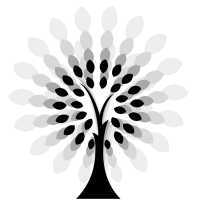Houlm
A houlm, also called a thaumaturgical helm or a magister's crown, is a thaumaturgical device that interacts with the human brain, providing knowledge, calculation or perception abilites, or for medical reasons. Houlms were most famously used by the Holisticians of the Rasian Academy, a crucial tool of their work.
Magicplugin-autotooltip__small plugin-autotooltip_bigMagic
Magic, also called thaumaturgy is the art and science of harnessing elementals, and instructing them to carry out simple or complex tasks.
Invoking more powerful spirits or gods is a related but much more dangerous art, called theurgy.
Magic
magic
This is in a series of articles about
 plugin-autotooltip__small plugin-autotooltip_bigMagic
plugin-autotooltip__small plugin-autotooltip_bigMagic
Magic, also called thaumaturgy is the art and science of harnessing elementals, and instructing them to carry out simple or complex tasks.
Invoking more powerful spirits or gods is a related but much more dangerous art, called theurgy.
Magic
magic
This is in a series of articles about
This is in a series of articles about magic, thaumaturgy and esotericismplugin-autotooltip__small plugin-autotooltip_bigMagic
Magic, also called thaumaturgy is the art and science of harnessing elementals, and instructing them to carry out simple or complex tasks.
Invoking more powerful spirits or gods is a related but much more dangerous art, called theurgy.
Magic
magic
This is in a series of articles about.
Rasian houlms of the classical period were shaped like metal crowns or helmets, covering the skull and sometimes the ears and eyes. With training, a holistician's mind could interact with the houlm, accessing skills, information and memory brain. Some houlms were used to make complex calculations, create holistic models called “holistic constructs”, complex visualisations synthesising data to make analyses and predictions.
Skilled holisticians could combine several houlms covering a number of different areas of expertise in parallel. The most skilled were the “triple-crown” holisticians, who could manage three or more holms at once. Such feats required great experience and endurance, since misuse could permanently damage the brain.
Houlms were also used for medical reasons, for simple tasks like sedation or pain relief, or calming patients in mental distress. Complex houlms could even supplement parts of the brain that were damaged. Other houlms could augment or even replace the senses of vision and hearing, replacing lost senses or enabling scrutiny of the tiniest objects or far distant sounds.
During the Magisteriate period at Rasia, houlms, along with any disciplines related to manipulating the human brain, were entirely banned. A few holms still exist today, held in private collections or in the archives at Rasia, but the skills required to access the knowledge stored within them has long since been lost.
Similar devices were used in ancient Miyarris and in the Taigan magicplugin-autotooltip__small plugin-autotooltip_bigMagic
In common terms, magic is the art of producing a desired outcome through occult means. Various arts are described as magical, from common street illusionists, village herbalists, and rituals for the intercession of deities. However, true magic is the art and science of elemental mastery, harnessing elemental creatures and instructing them to perform simple or complex tasks. of ancient Traithe. The slaving society of ancient Keeyag was said to use devices to subjugate the will of slaves and criminals, as well as inflicting pain and torture.
